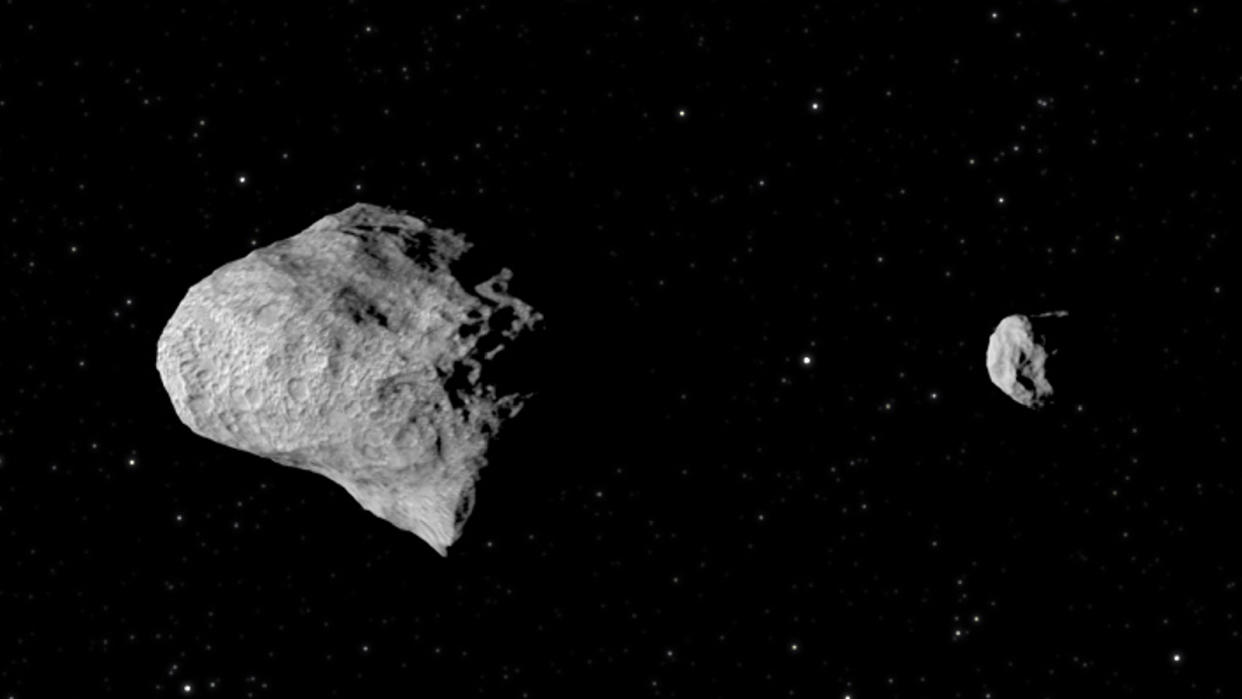NASA discovers secret moon orbiting nearby 'planet killer' asteroid after recent close approach to Earth

Blurry new photos of a mountain-size, "planet killer" asteroid that recently made its closest approach to Earth in more than a century have revealed a surprising new feature of the gigantic space rock — it has a secret minimoon.
Asteroid 2011 UL21 is a potentially hazardous, near-Earth object that was previously estimated to be somewhere between 1.1 and 2.4 miles (1.7 to 3.9 kilometers) wide, making it larger than 99% of near-Earth asteroids. At this size, it could likely wipe out an entire continent and cause devastating climate change on a global scale, earning it the planet killer moniker. However, it is not predicted to hit Earth in the future.
On June 27, 2011 UL21 reached its closest point to Earth in at least 110 years when it zipped past our planet at more than 58,000 mph (93,000 km/h). The giant space rock reached a minimum distance of around 4.1 million miles (6.6 million kilometers) — around 17 times further from our planet than the moon. This likely makes it one of the 10 largest asteroids to pass this close to Earth since 1900, according to astrophysicist Gianluca Masi of the Virtual Telescope Project in Italy.
Scientists at NASA's Goldstone Deep Space Communications Complex in California monitored the historic flyby using the Goldstone Solar System Radar telescope. The team snapped grainy "bistatic" images of the gigantic rock by bouncing radio waves off its surface, which revealed two things: First, the space rock is probably only around 1 mile (1.6 km) wide; and second, there was a second, smaller asteroid orbiting it.
Two days later, on June 29, the same telescope also captured images of the pyramid-size asteroid 2024 MK as it passed by our planet closer than the moon. These pictures revealed that this recently discovered space rock was knocked off course by the close encounter.
The new images of both asteroids were released July 3 by NASA' Jet Propulsion Laboratory (JPL).
Related: No, NASA hasn't warned of an impending asteroid strike in 2038. Here's what really happened.

2011 UL21's newly discovered minimoon, which has not been named, is what researchers call a small-body satellite — an asteroid that orbits another larger asteroid or dwarf planet. From the images it is unclear how large the new space rock really is but it is likely significantly smaller than 2011 UL21.
The two asteroids form what is known as a binary system, and are separated by a distance of around 1.9 miles (3 km), according to JPL.
Small-body satellites are the most common types of natural satellite in the solar system, and are especially common around asteroids this large.
"It is thought that about two-thirds of asteroids of this size are binary systems, and their discovery is particularly important because we can use measurements of their relative positions to estimate their mutual orbits, masses, and densities, which provide key information about how they may have formed," Lance Benner, a JPL scientist who led the recent observations, said in a statement.
related stories
—'Planet killer' asteroids are hiding in the sun's glare. Can we stop them in time
—NASA's most wanted: The 5 most dangerous asteroids to Earth
—How many 'city killer' asteroids narrowly miss Earth each year?
It's also possible that the newly discovered moonlet is actually two separate small-body satellites in close proximity, as NASA's Lucy mission recently proved is the case with asteroid Dinkinesh.
The next time we will get a good look at 2011 UL21 and its newfound companion will be in 2089, when the space rocks will get to within 1.7 million miles (2.7 million km) of our planet — about two and a half times closer to us than its current approach.
